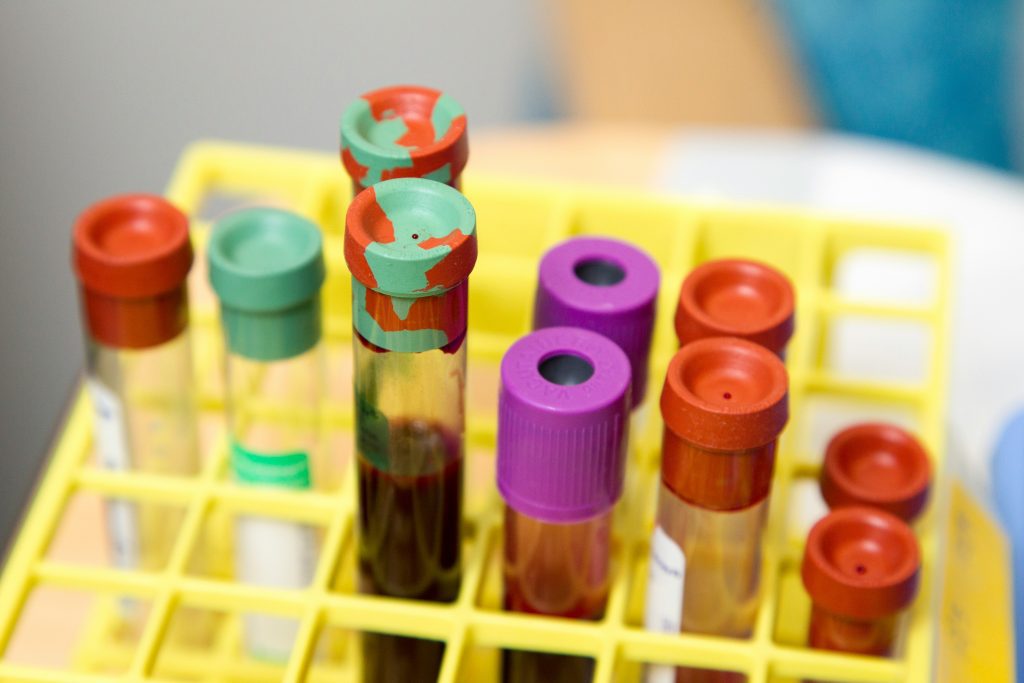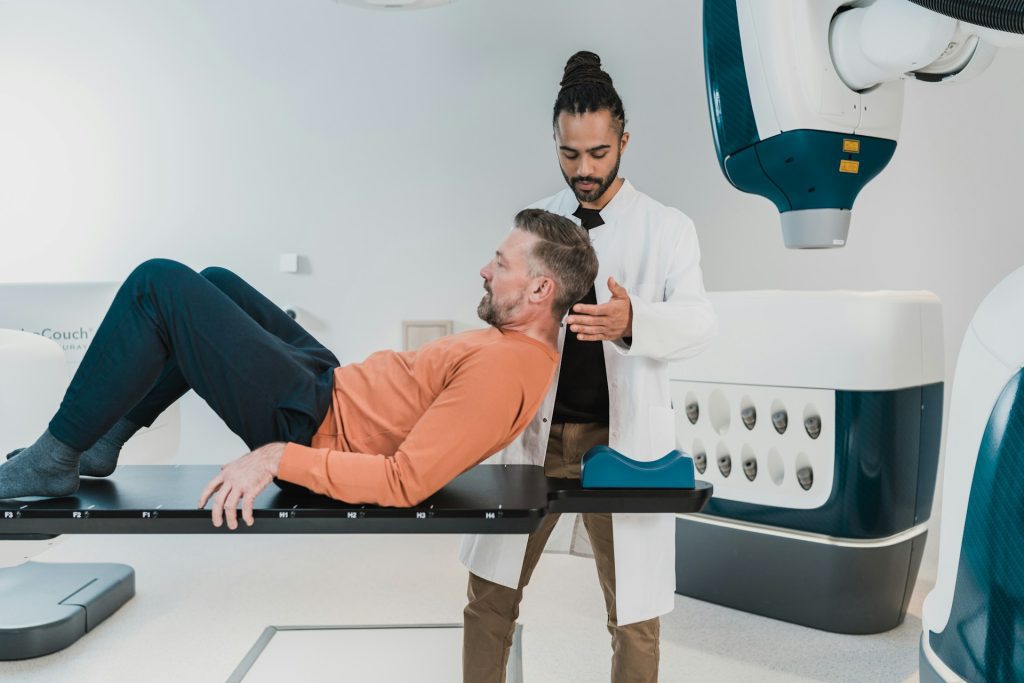A prostate exam aims to assess the gland and possible abnormalities. Analysis can be done through a blood test, digital rectal exam, prostate ultrasound, biopsy, or even other imaging tests such as MRI. Learn everything in today’s blog.
Prostate exams are essential for the early detection not only of dreaded malignant conditions like the well-known prostate cancer but also other diseases that can affect men in general, whether they are young adults or elderly.
Two of the most common and well-known exams are the digital rectal exam and the PSA (Prostate-Specific Antigen) test.
Although the digital rectal exam is uncomfortable and inconvenient for many, it is crucial to assess the size, texture, and potential irregularities of the prostate.
The PSA involves analyzing the blood level of a protein produced by the prostate. Combined, they provide a general assessment, allowing for early interventions when necessary.
But are these 2 the only existing options? This content aims to explore in detail the types of prostate exams, highlighting their importance for male sexual health. Follow along and understand everything about the topic.
What are prostate exams for?
In addition to being essential for early detection of prostate cancer, prostate exams are also extremely important for assessing the health and function of the prostate, a gland located below the bladder and responsible for producing part of the seminal fluid.
The exams also allow for the identification of other treatable conditions, such as an enlarged prostate or inflammations, enabling necessary medical interventions for each situation.
They are also essential for monitoring prostate health over time, especially for men with a family history of cancer or other risk factors.
Also read: Male check-up: exams every man needs
Can men without symptoms undergo these exams?

Yes, men without symptoms can and should undergo these exams. Prostate exams are fundamental for maintaining men’s health and well-being, enabling prevention, diagnosis, and early treatment of potentially serious conditions, such as cancer.
This means that, at a certain point in life, it is important (and advisable) to not only perform the PSA but also the digital rectal exam.
At what age is it necessary to start prostate exams?
The recommended age to start prostate exams can vary depending on various factors, including personal and family medical history, as well as specific medical guidelines of each country.
According to Brazilian guidelines, the Ministry of Health recommends that men from the age of 50 undergo regular prostate exams.
However, when there is a family history of prostate cancer or other risk factors, the guidance is to start screening from the age of 45.
In certain cases, recommendations may vary according to individual health conditions and should be discussed with your urologist.
Types of prostate exams
There are two very common exams for assessing prostate health in Brazil, which are frequently used together for a more comprehensive evaluation, as explained at the beginning of this text: the PSA and the digital rectal exam.
Below, we will explain a little about each of them, in addition to other existing options.
1) Blood test: Prostate-Specific Antigen (PSA)
- Purpose: measure the levels of PSA, a protein produced by the prostate. Elevations may indicate issues such as inflammation, benign enlargement of the prostate (benign prostatic hyperplasia), or even cancer.
- How the test is performed: collection of a blood sample from the patient.
- Frequency: varies depending on the patient’s history and age, but it can be stated that it needs to be performed annually from the age of 50.
- Accuracy of results: the interpretation of PSA results depends on a careful analysis, considering the patient’s medical history, previous results, clinical exams, and other risk factors. Therefore, the test can only be interpreted on a case-by-case basis by a doctor.
2) Digital Rectal Exam
- Purpose: assess the size, shape, and texture of the prostate, detecting the presence of any abnormalities in the prostate and the rectum of the patient. It allows the doctor to find issues such as prostate enlargement, inflammation, nodules, or other irregularities.
- How the test is performed: in this procedure, the doctor inserts a lubricated finger into the rectum of the patient. Although it is uncomfortable, it is quick and of utmost importance.
- Frequency: varies depending on the patient’s history and age, but it can be stated that it needs to be performed annually from the age of 50.
- Accuracy of results: may vary depending on several factors, including the presence or absence of palpable abnormalities in the prostate, and the patient’s cooperation during the procedure. However, the interpretation of the result of the digital rectal exam depends on a careful analysis, considering the patient’s medical history, previous results, clinical exams, and other risk factors. Therefore, the test can only be interpreted on a case-by-case basis by a doctor.
3) Prostate Ultrasound
- Purpose: assess the size, shape, texture, and possible abnormalities in the prostate, such as nodules, cysts, calcifications, or other changes. Often, it is used as a test in conjunction with others (PSA and digital rectal exam, for example), to confirm diagnoses with more assertiveness.
- How the test is performed: the prostate ultrasound provides detailed images of the gland and surrounding structures using high-frequency sound waves.
- Frequency: varies depending on the patient’s history and age; it is usually requested by a doctor only when necessary.
- Accuracy of results: in some cases, the prostate ultrasound may present limitations. When necessary and after rigorous medical evaluation, more detailed complementary tests, such as prostate MRI or ultrasound-guided biopsy, may be necessary for a more complete and accurate assessment, especially in cases of suspected prostate cancer.
4) Prostate Biopsy
- Purpose: a prostate biopsy is a procedure performed to obtain small tissue samples from the prostate for laboratory analysis. Its main purpose is to diagnose prostate cancer or other conditions, when other tests indicate the need for further investigation. It is often performed when other tests, such as PSA, digital rectal exam, and ultrasound, show concerning results that suggest the presence of abnormalities.
- How the test is performed: in the procedure (which is invasive), the doctor inserts a special needle through the rectum or perineum (the area between the anus and the scrotum) to collect small fragments of tissue from the prostate, which are sent for laboratory analysis. It is usually performed under local anesthesia and, in some cases, may be guided by ultrasound.
- Frequency: requested by a doctor only when necessary or when there are abnormalities in the gland.
- Accuracy of results: some studies – controversially – question the precision and necessity of prostate biopsy results. Currently, there are highly advanced and precise imaging exams, such as MRI, which can avoid the invasive test in many cases.
Is there an alternative to the digital rectal exam for checking prostate health?

Although it may seem uncomfortable for some men, the digital rectal exam is one of the least invasive for the initial evaluation of the prostate.
There are other alternatives, but generally, they are associated and work in conjunction to contribute to an accurate diagnosis (such as PSA and imaging tests).
Does the digital rectal exam hurt?
It does not hurt, but it can be slightly uncomfortable. This discomfort during the digital rectal exam can vary from person to person.
The discomfort can occur due to the sensation of pressure or distension in the rectum during the exam.
It is important to emphasize again that this is a generally quick exam, lasting only a few seconds, and often tolerable for most men.
If you feel pain during the assessment, do not worry and communicate it to the doctor.
What happens if a prostate exam detects abnormalities?

A precise diagnosis usually occurs in stages. The doctor will conduct other exams to assess the overall situation.
Depending on the nature and degree of the abnormality found, the doctor will proceed with:
- Clinical follow-up of the patient;
- additional tests;
- treatment – which in the case of cancer may be radiation therapy, surgery, or active surveillance, depending on the stage of the tumor;
- counseling and therapeutic support.
What happens if a man does not undergo prostate exams?
If a man does not undergo regular prostate exams, he may miss the opportunity to detect early serious health problems, such as prostate cancer, as well as issues like benign prostatic hyperplasia (benign enlargement of the prostate) or prostatitis (inflammation of the prostate).
In the case of prostate cancer, for example, early detection significantly increases the chances of cure, while advanced stages of the disease can make treatment more difficult.
Besides this, the man also misses out on evaluating and resolving other conditions like recurrent urinary infections, difficulty urinating, pelvic pain, or sexual function problems, which can significantly affect quality of life.
Why is the prostate exam still a taboo?
Although our society has significantly advanced in many cultural issues, unfortunately, the prostate exam can still be a taboo, due to the discomfort and access to the patient’s intimacy.
Unfortunately, the culture of machismo strongly influences the situation. There are still unfounded myths about the digital rectal exam (such as pain or loss of masculinity), mainly due to fear of the unknown.
It is highly recommended that men in general discuss with their doctors and family members about the need and frequency of prostate exams.
For this, age, personal and family medical history, and other risk factors should be considered. Prostate exams are an important part of preventive care and maintaining men’s health throughout life.
If you are over 50 and/or have a family history of prostate cancer, do not waste time: our team is ready to help you. Contact us now!

